Overview
The Overview screen is accessed by clicking a card on the API Catalog screen. Here, you find all the information about the API and you can:
-
edit the registered API data
-
create a new version
-
clone and delete APIs
-
obtain traffic information
Each section’s data is changed independently. To edit, click on the corresponding edit option. The sections are:
-
API Basic Definitions
-
Environments
-
Resources and Operations
-
Flows
After each change, you have two saving options:
-
Save: saves the changes in the same revision.
-
Save as new Revision: creates a new revision with the changes. Basic data is replicated for all revisions, but resources and flows are saved according to each revision’s definitions.
|
Editing revisions can only be done by users within the API’s deploy context. If you are outside the API context you want to revise, you cannot overwrite the revision by clicking "Save," only save a new revision using "Save as new revision." Refer to the documentation detailing the revision scenarios for more understanding. |
| A Revision is like a document revision and is suitable for minor changes. For major changes, create a new version. |
API Basic Definitions
In API Basic Definitions, you access the general details of an API.
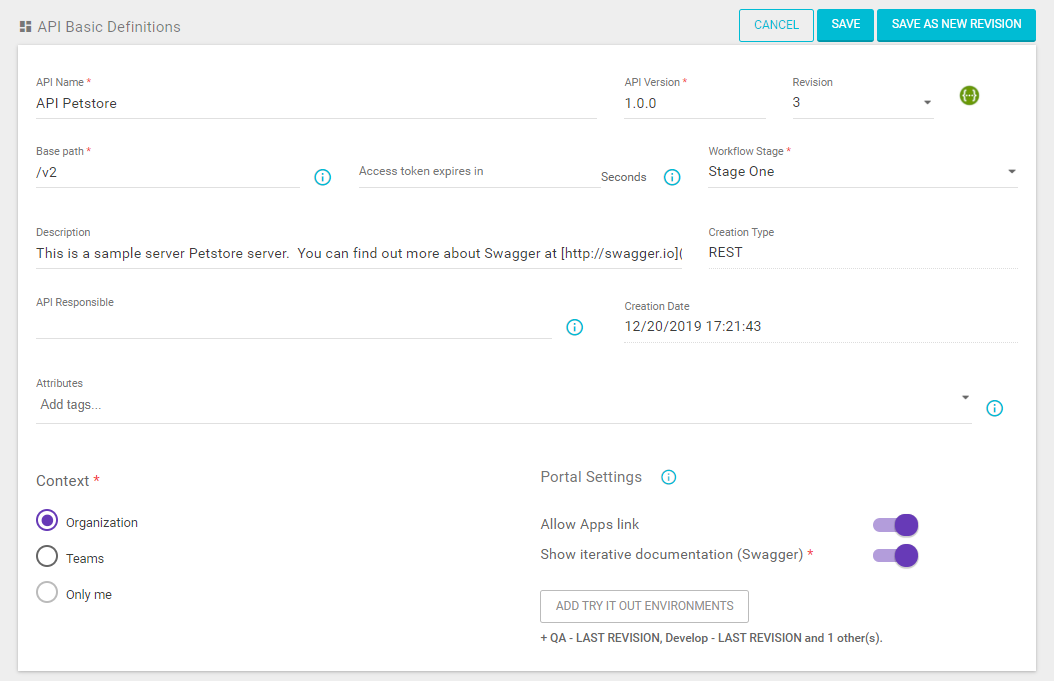
You can view the Swagger file of a given Revision through the Swagger Editor. Select the desired Revision and click the Swagger icon next to the Revision field.
This screen also contains the Portal Settings section, used to configure the visibility and availability of the API within the Developer Portal. The options are:
-
Allow Apps link: if enabled, the API will be displayed in the Register New App section of the Developer Portal. Otherwise, the API will not be accessible for app consumption.
-
Show iterative documentation (Swagger): if enabled, the API will be available for testing via the Developer Portal. Select the environments for testing with the Add try it out environments button and choose the applicable revision.
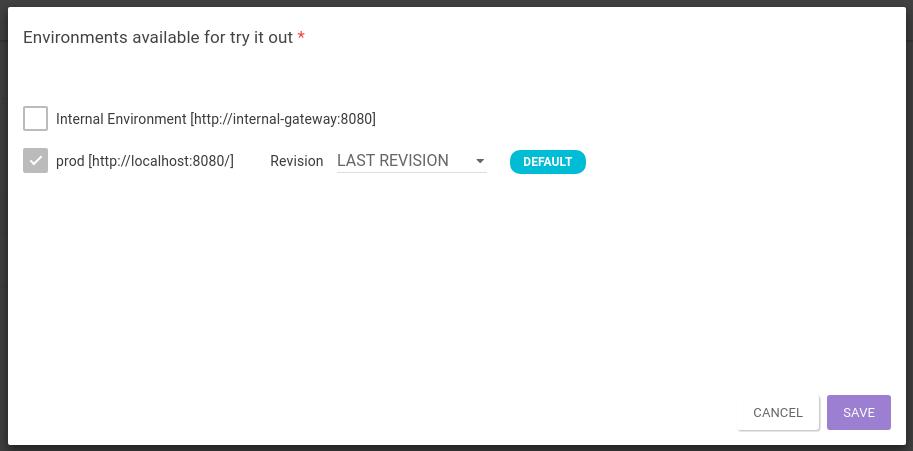
| If you select the Last Revision option on the Revision field when configuring environments, the latest created revision will be used for the tryout, even if there are subsequent revisions. |
Environments
In the Environments section, you can select the environments in which your API will be deployed. To do so, these environments must be registered.
Read more about different environments and how to set them up.
Resources and Operations
In Resources and Operations, you can view all API resources and operations.
When editing, you will be redirected to the Resources update screen.
Flows
In Flows, you view all the interceptors inserted in the resources and operations registered in the API.
When editing, you will be redirected to the Flows update screen.
Interface Completeness
If Adaptive Governance is available in your Platform, the Interface Completeness field will be displayed on the far right of the screen. It shows the progress of API creation and suggests improvements.
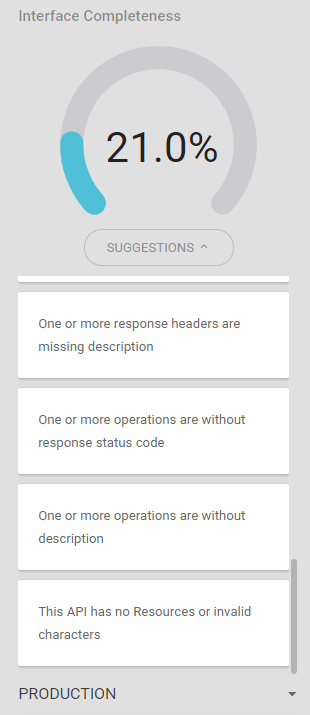
Environment Stats
Available below Interface Completeness, this option displays traffic and data information linked to the API. It also allows you to:
-
filter data by Environments associated with the API, whether they are accessible on the Gateway or not;
-
view the number of apps linked to the API;
-
view the number of calls made to the API in the last 30 days;
-
access the API Trace screen by clicking the Trace API button;
-
access the API Timeline screen by clicking the Timeline button.
|
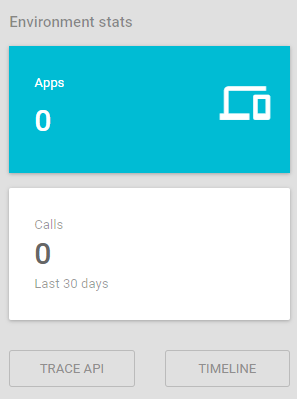
Plans
In Plans, you view all the API plans. You can change the plans registered data by clicking on its name. The plan with a blue background is the default, others are non-default.

API Actions
It’s a set of icons that allow you to perform the following actions:
-
Clone: creates an identical copy of the API. All resources, interceptors, and general data are duplicated. You only need to change the name and base path of the new API.
-
Export: downloads the API with all registered data. This option is used when it is necessary to upload the same API to different environments.
| The upload only works in different environments of the same API Manager. To upload to another Manager, use Swagger import. |
-
New version: loads basic data on the screen, but you need to change the name or version. Flow data is not replicated.
-
Delete: deletes the API.
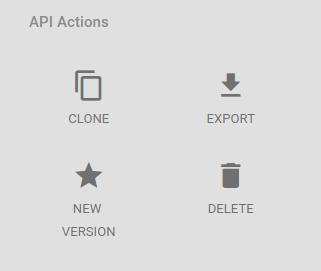
Share your suggestions with us!
Click here and then [+ Submit idea]